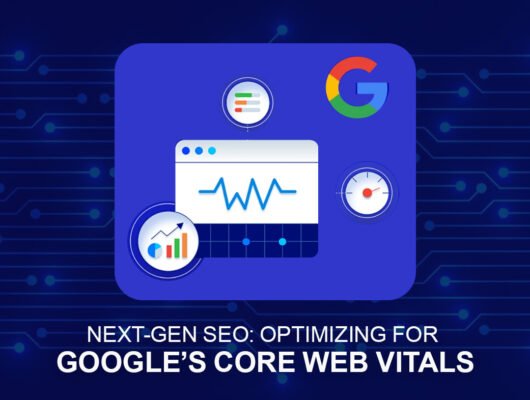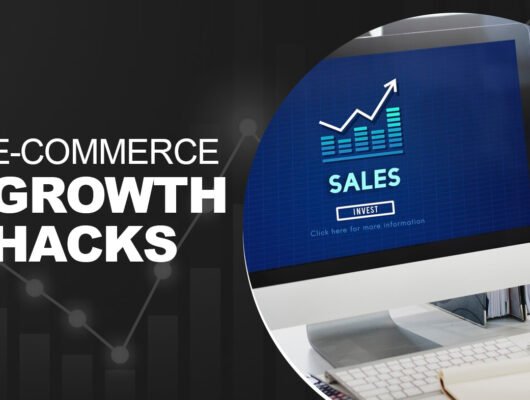Introduction to Email Marketing
Email marketing has become an essential component of the digital marketing landscape, playing a pivotal role in how businesses communicate with their customers. As technology has evolved, so too has the methodology and effectiveness of email marketing strategies. In its early days, email marketing primarily consisted of simple promotional messages designed to capture immediate attention. Today, however, it has transformed into a multifaceted tool that enables brands to build lasting relationships with their audience through targeted, personalized communications.
The significance of email marketing cannot be understated. It offers an impressive return on investment (ROI), with reports indicating that for every dollar spent on email marketing, businesses can expect an average return of $42. This robust financial incentive makes email marketing viable for businesses of all sizes, from startups seeking to establish their brand presence to large corporations looking to maintain their customer engagement. This channel fosters direct communication, providing clients with valuable updates, promotional offers, and personalized content tailored to their interests.
Adherence to best practices in email marketing is crucial in order to maximize effectiveness and maintain compliance. With increasing scrutiny over data privacy and user consent, it is vital for businesses to implement strategies that respect consumer preferences while ensuring that their messages stand out in an overcrowded inbox. From crafting engaging subject lines that encourage open rates to segmenting audiences for tailored messaging, each aspect contributes to the overall success of email campaigns. As we continue to navigate through 2023, embracing these email marketing best practices will empower businesses to connect with their audience in genuine and impactful ways.
Building a Quality Email List
In the realm of email marketing, the adage “quality over quantity” holds significant relevance, particularly in 2023. A quality email list is comprised not just of numerous contacts but of individuals who have shown genuine interest in your brand and offerings. This deliberate collection of contacts fosters a more engaged audience, which translates into higher open and conversion rates. One effective strategy to build a targeted email list is through the implementation of opt-in forms. Placing these forms prominently on your website enables visitors to subscribe willingly, ensuring that they are interested in the communications they will receive.
Another valuable approach involves the use of lead magnets, which are incentives offered to potential subscribers in exchange for their contact information. Lead magnets can take various forms, such as e-books, whitepapers, or exclusive discounts. By providing tangible value up front, you not only encourage sign-ups but also establish a relationship built on trust and engagement from the outset.
Equally important are ethical collection practices that prioritize consent and respect for user privacy. It is essential to inform subscribers about what they can expect from your emails, how their information will be used, and how often they will hear from you. This transparency not only fosters trust but also helps in maintaining a positive brand reputation.
Additionally, segmenting your email list allows you to tailor your communication based on specific attributes or behaviors of your audience. By categorizing your contacts based on their preferences or past interactions, you can deliver personalized content that resonates more deeply with each segment. This targeted approach enhances engagement and significantly improves the effectiveness of your email marketing efforts.
To summarize, building a quality email list requires a strategic focus on ethical practices, consent, and targeted collection methods such as opt-in forms and lead magnets. Through these efforts, brands can cultivate a more engaged audience that is responsive to their marketing initiatives, ultimately driving better results in email campaigns.
Creating Compelling Email Content
In the realm of email marketing, crafting compelling content is paramount for capturing the attention of subscribers and promoting desired actions. A well-designed email not only communicates information but also engages the reader, ensuring that they remain connected to the brand.
The first element to focus on is the subject line. This is the initial point of contact with your audience and plays a critical role in determining whether the email is opened or ignored. A compelling subject line should be concise, informative, and intriguing. Utilizing active language and posing questions can incite curiosity. Moreover, incorporating personalization, such as including the recipient’s name, can significantly increase open rates, as it creates a sense of relevance and familiarity.
Once the subject line has successfully captured attention, the body content must deliver substantial value. Email content should be structured clearly, utilizing short paragraphs and bullet points where appropriate to enhance readability. It is vital to communicate the main message early in the email, followed by supportive information that encourages further engagement. Including relevant images or graphics can also bolster the appeal of the email and provide visual breaks, aiding in retention of information.
Another crucial component is the call to action (CTA). The CTA is the desired outcome of your email and should be prominently positioned. It is essential that the CTA is clear and compelling, prompting recipients to take action. Phrases such as “Shop Now” or “Learn More” can be effective in driving engagement. Furthermore, leveraging dynamic content can tailor the experience for each subscriber, thereby increasing the chances of interaction. This approach engages recipients on a more personal level and highlights the relevance of the content to their specific preferences or behaviors.
By focusing on these key elements—subject lines, body content, and CTAs—email marketers can create engaging content that resonates with audiences and enhances response rates.
Designing Responsive Email Templates
In the realm of email marketing, the importance of responsive design cannot be overstated. As users access their emails on a plethora of devices—ranging from desktops to tablets and mobile phones—it is essential for marketing professionals to create email templates that are visually appealing and function seamlessly across all platforms. A well-designed responsive email template ensures that content remains accessible, regardless of device or screen size, thus enhancing user experience and engagement.
To achieve responsive email design, it is advisable to adopt a mobile-first approach. This means that templates should be designed with mobile devices in mind before scaling up to larger screens. Utilizing fluid grids, flexible images, and media queries is crucial in creating emails that adapt gracefully to different display sizes. By doing so, elements within the email template such as images, buttons, and text will resize and reposition, maintaining readability and functionality without sacrificing aesthetic appeal.
Moreover, balancing aesthetics and readability is a fundamental aspect of designing effective email templates. While visual elements such as images, colors, and typography contribute to the overall look and feel, it is vital that these elements do not overpower the message being communicated. Simple designs with ample white space can often enhance user interaction, as they offer a clear pathway to the call-to-action. Additionally, utilizing a clear hierarchy in text—through varying font sizes and bolding important information—can direct the reader’s focus and facilitate better comprehension.
In summary, the design of responsive email templates plays a critical role in the success of email marketing campaigns. By prioritizing mobile compatibility and ensuring readability through a well-balanced aesthetic, marketers can significantly boost engagement and foster a positive relationship with their audience.
Scheduling and Frequency of Emails
Effective email marketing hinges not just on the content of the messages, but also on their timing and frequency. Understanding audience behavior is essential in determining the optimal times to send emails, which can significantly impact engagement rates. For instance, studies have shown that sending emails on weekdays, particularly on Tuesdays and Thursdays, often results in higher open and click-through rates. Conversely, weekends might not be as effective, as many potential subscribers may not check their emails until Monday.
In addition to considering the days of the week, marketers should also take into account the specific hours during which their audience is most active. Analyzing past campaign data can unveil trends, such as whether your subscribers are more responsive in the mornings or afternoons. This insight can guide your scheduling, allowing you to send emails when they are more likely to be seen and acted upon.
Finding the right frequency of emails is equally crucial. Sending emails too often can lead to subscriber fatigue, resulting in increased unsubscribe rates, while infrequent communication may cause your message to become forgotten amid the myriad of other emails your recipients receive. A recommended practice is to establish a consistent schedule, such as weekly or bi-weekly newsletters, which sets clear expectations for your subscribers. Testing various frequencies can also be useful; segmenting your audience and sending different types of emails to each segment will help you identify the balance that works best.
Ultimately, the key is to strike a balance between frequency and engagement. By thoughtfully scheduling your email campaigns based on audience insights and behavior, you can maintain interest and reduce the risk of overwhelming subscribers. This approach fosters a positive relationship between your brand and its audience, essential for successful email marketing in 2023.
A/B Testing for Email Campaigns
A/B testing, also known as split testing, is an essential practice for marketers aiming to optimize their email campaigns. This method allows marketers to compare two versions of an email by changing a single element such as the subject line, content, or design to determine which performs better. By leveraging A/B testing, businesses can make data-driven decisions that enhance engagement rates, click-through rates, and overall effectiveness of their email marketing efforts.
When considering what elements to test, one might start with subject lines. This is crucial as the subject line is the first thing recipients see, impacting their decision to open the email. Testing different wordings, lengths, or even the use of emojis can yield significant insights. Additionally, content variations are fundamental; changing the email text, images, or calls to action can reveal which content resonates more with the target audience. Finally, design aspects such as color schemes, layout, and button placements should also be tested as these can influence user interaction.
To set up an A/B test correctly, marketers should ensure they have a clear hypothesis and identify their testing goals. It is also vital to segment the email list appropriately so that each version reaches a similarly sized and demographic group. The timing of the send is another critical factor; make sure to send both variations at the same time to eliminate timing biases. After the test has been executed, the results should be analyzed meticulously. Key performance indicators, such as open rates and conversion rates, will indicate which version performed better, allowing for informed decision-making regarding future email campaigns.
In summary, A/B testing is indispensable for effective email marketing in 2023. It provides actionable insights that can dramatically improve campaign performance and overall audience engagement.
Monitoring and Analyzing Email Performance
Measuring the effectiveness of email marketing campaigns is crucial for understanding audience engagement and driving improvements. Key metrics used to evaluate email performance include open rates, click-through rates, conversion rates, and bounce rates. Each of these metrics provides unique insights that can inform future marketing strategies.
Open rates reflect the percentage of recipients who open the emails, serving as an indicator of how effective the subject line and pre-header text are in capturing attention. A high open rate suggests that the audience finds the content appealing and relevant. In contrast, a low open rate may necessitate a review of subject lines or target audiences. Click-through rates (CTR) offer additional detail by measuring the proportion of readers who not only opened an email but also clicked on one or more links within. This metric indicates how compelling the content is and whether it drives desired actions.
Conversion rates measure the percentage of recipients who completed a predetermined action, such as making a purchase or signing up for a newsletter. This metric is particularly important as it directly correlates to the campaign’s return on investment (ROI). Lastly, bounce rates highlight the percentage of emails that were not successfully delivered. High bounce rates can negatively impact domain reputation and may signal issues such as outdated email lists or server problems.
To effectively monitor these metrics, marketers can utilize various tools and software like Google Analytics, Mailchimp, or HubSpot. These platforms not only provide data on performance metrics but also offer analytical insights to aid in understanding user behavior. Interpreting this data allows marketers to identify trends, optimize email content, segment audiences effectively, and employ A/B testing strategies, ensuring continual improvement of email marketing efforts.
Compliance with Email Marketing Laws
Email marketing has become an essential tool for businesses to engage with their audience effectively. However, the legal landscape surrounding this practice is intricate and mandates adherence to various regulations to ensure ethical and lawful operations. Two of the most critical regulations that organizations must comply with are the General Data Protection Regulation (GDPR) and the CAN-SPAM Act. Understanding these laws is crucial for successful email marketing campaigns.
The GDPR, applicable in the European Union and beyond, sets stringent requirements for obtaining consent before collecting personal data. Businesses must ensure that they acquire explicit permission from individuals to send marketing emails. This consent should be informed, meaning that recipients are fully aware of what they are agreeing to, including the types of data collected and how it will be used. Moreover, the GDPR emphasizes the importance of providing users with the ability to withdraw their consent at any time, which directly links to the need for robust unsubscribe options in marketing communications.
In the United States, the CAN-SPAM Act also plays a significant role in regulating email marketing practices. Organizations must not only provide a clear and conspicuous opt-out mechanism in their emails but also honor any unsubscribe requests promptly. The law requires that email marketers include a legitimate physical address within their messages to maintain transparency and trust with recipients. Furthermore, the CAN-SPAM Act mandates that deceptive subject lines and false header information are strictly prohibited, ensuring that recipients can accurately identify the sender of the email.
Compliance with these regulations is not merely a legal obligation; it is a critical component of building trust with your audience. By prioritizing consent, transparency, and user-friendly unsubscribe options, businesses can foster positive relationships with their subscribers and avoid potential penalties associated with non-compliance. Adhering to email marketing laws ensures that businesses can implement effective campaigns while respecting the rights of their audience.
Conclusion and Future Trends in Email Marketing
Email marketing remains a pivotal tool for businesses seeking to engage with their audience effectively. As we reflect on the core best practices discussed, it is imperative to emphasize the importance of list segmentation and personalization. Tailoring content to specific audience segments not only enhances engagement but also boosts conversion rates. Marketers must prioritize clean lists to maintain high deliverability and open rates. Furthermore, crafting compelling subject lines and providing valuable content will keep subscribers interested and invested in communications.
Looking ahead, the landscape of email marketing is poised for remarkable transformation, primarily driven by advancements in technology and shifts in consumer expectations. One notable trend is the integration of artificial intelligence (AI) and machine learning in email campaigns. These technologies can facilitate predictive analytics, allowing marketers to anticipate subscriber behavior and tailor messages accordingly. By harnessing these emerging technologies, businesses can create more relevant and personalized email experiences.
Moreover, the push towards hyper-personalization is gaining momentum. Consumers today expect communications that resonate with their interests and preferences. Brands that adopt solutions enabling dynamic content delivery and real-time personalization will likely see enhanced loyalty among their subscribers. Additionally, embracing interactive emails can lead to increased engagement rates, as they provide recipients with more immersive experiences directly within their inboxes.
As we navigate the future of email marketing, it is crucial for marketers to remain agile and adapt to these evolving trends. Consumer expectations will continue to progress, necessitating that businesses innovate and refine their strategies. By combining the best practices outlined with a forward-looking mindset on technology and personalization, marketers can harness email marketing’s full potential to build lasting connections with their customers.







